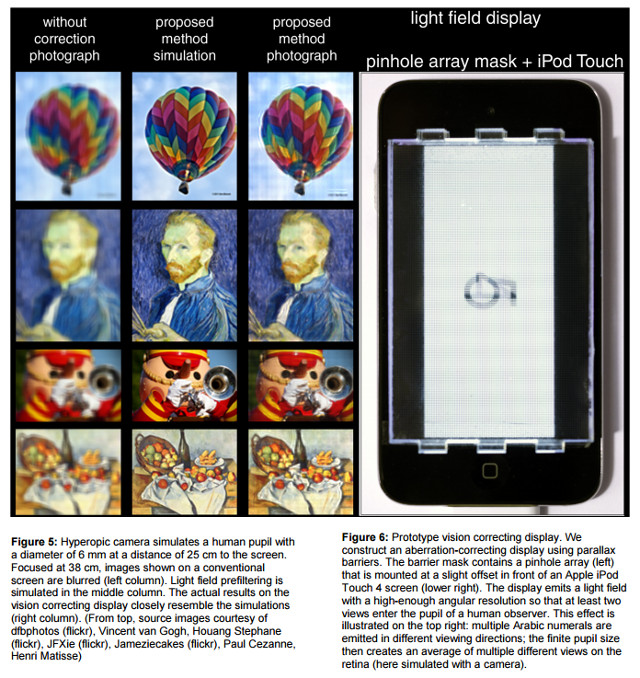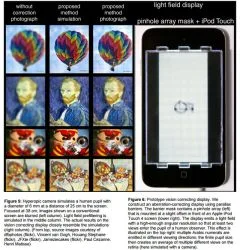Eyeglasses, surgery and contact lenses are great at correcting first order vision problems, but not for some of the personal variations and more complex vision disorders. One idea to address this is to thoroughly characterize your eyes and then use this information to “distort” images presented on an electronic display that are the inverse of your vision abnormalities. As a result, you would not have to wear eyeglasses and would see a clear and crisp image on the display.
That’s an interesting idea, but as soon as you looked away from the display, the world would appear uncorrected and so you would then need to put on your glasses.
This is a hard problem to solve, so the current focus is on correcting nearsightedness, which means objects close to the person are out of focus unless you don your reading glasses. Researcher Brian Barsky presented a paper (#12.1) at SID titled “An Overview of Vision Realistic Rendering and Vision Correcting Displays”, that described efforts to develop such a capability.
In his paper, he first described a method for characterizing the eyes. His vision correction algorithm is quite interesting as it uses a 2D image plus a depth map – a common 3D content creation format – to create the inverse distortion by blurring or distorting the image as a function of depth.
To test the algorithms they built what they called a light field display using a parallax barrier with a modified iPad, but this appears to be what I would call an autostereoscopic display. The results so far are shown in the figure, along with the light field display used in experiments. There is more work to be done.


